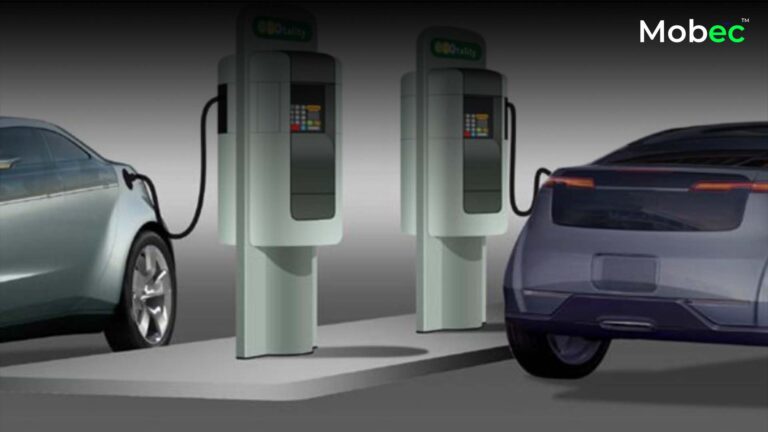The rapid expansion of electric mobility has underscored the critical role of charge points in facilitating the widespread adoption of electric cars. Charge points serve as essential infrastructure for electric vehicle owners, providing the necessary means to recharge their vehicles and support seamless mobility. A comprehensive understanding of the charging infrastructure is vital for current and prospective electric car owners to navigate the evolving landscape of electric vehicle charging. This blog serves as a comprehensive guide to charge points for electric cars, offering insights into the types of charging infrastructure, their functionalities, benefits, and their role in promoting sustainable transportation.
Understanding the Importance of Charge Points for Electric Cars:

Charge points for electric cars play a fundamental role in enabling the practicality and convenience of electric vehicle ownership. These charging stations serve as the backbone of the electric vehicle ecosystem, providing the necessary infrastructure for recharging electric car batteries and supporting daily commuting and long-distance travel. The accessibility and efficiency of charge points are crucial in addressing concerns about range anxiety and fostering the widespread acceptance of electric cars as a viable and eco-friendly transportation alternative. Understanding the significance of charge points in promoting sustainable mobility is key to embracing the future of electric vehicles.
A Comprehensive Guide to Charging Infrastructure for Electric Cars:

1. Overview of Charging Infrastructure Types:
a) Level 1 Charging: Level 1 charging represents the most basic form of electric vehicle charging, utilizing a standard 120-volt AC plug commonly found in households. This charging option offers the slowest charging speed but is ideal for overnight charging at home or in residential settings.
b) Level 2 Charging: Level 2 charging operates at a higher voltage of 240 volts, providing faster charging speeds compared to Level 1 charging. These charging stations are commonly found in public locations, workplaces, and residential areas, enabling electric car owners to recharge their vehicles within a few hours.
c) DC Fast Charging: DC fast charging stations offer rapid charging solutions for electric cars, utilizing direct current (DC) power to recharge EV batteries at a significantly faster rate than Level 1 and Level 2 charging stations. These high-power charging points are strategically located along highways and major travel routes, catering to the needs of long-distance travelers and individuals requiring quick recharging options.
2. Benefits of Charging Infrastructure for Electric Cars:
a. Range Confidence: The presence of an extensive charging infrastructure network instills confidence in electric vehicle owners, addressing concerns about range anxiety and enabling long-distance travel without the fear of running out of battery power.
b. Environmental Sustainability: Charge points for electric cars contribute to reducing greenhouse gas emissions and promoting environmental sustainability by encouraging the adoption of zero-emission vehicles and minimizing the reliance on traditional fossil fuel-powered vehicles.
c. Economic Viability: The expansion of charging infrastructure fosters economic growth by stimulating investments in the electric vehicle industry, creating employment opportunities, and promoting the development of sustainable business models centered around electric vehicle charging.
d. User Convenience: The accessibility and convenience of charging infrastructure enable electric car owners to recharge their vehicles conveniently at various public locations, workplaces, and residential settings, promoting the practicality and feasibility of electric vehicle ownership.
3. Understanding the Charging Process for Electric Cars:
a. Plug-in Hybrid Electric Vehicles (PHEVs): Plug-in hybrid electric vehicles utilize both internal combustion engines and electric motors, enabling them to be charged through various charging points, including Level 1, Level 2, and DC fast charging stations.
b. Battery Electric Vehicles (BEVs): Battery electric vehicles rely solely on electric power and require charging through Level 1, Level 2, or DC fast charging stations to replenish their battery capacity and support daily commuting and long-distance travel.
4. Key Considerations for Electric Car Owners:
a. Charging Compatibility: Understanding the compatibility of your electric car with different types of charging infrastructure is essential to ensure a seamless charging experience and prevent any potential compatibility issues or charging delays.
b. Charging Network Accessibility: Familiarizing yourself with the availability and location of charging points within your vicinity and along your planned travel routes is crucial for efficient trip planning and ensuring that you have access to charging infrastructure when needed.
c. Charging Time and Speed: Considering the charging time and speed of different charging infrastructure types enables you to plan your charging schedule effectively and optimize the charging process to minimize waiting times and maximize convenience.
d. Integration of Renewable Energy: Embracing charging points that integrate renewable energy sources such as solar and wind power promotes environmental sustainability and contributes to the reduction of the carbon footprint associated with electric vehicle charging.
5. The Future of Charging Infrastructure for Electric Cars:
a. Technological Advancements: The future of charging infrastructure for electric cars is poised for significant advancements driven by continuous innovation and technological breakthroughs, including the integration of wireless charging solutions, high-power charging networks, and advanced smart charging technologies.
b. Sustainable Solutions: The integration of sustainable and eco-friendly charging solutions, such as implementing solar-powered charging stations and utilising energy storage systems, will play a critical role in promoting environmental stewardship and reducing the environmental impact of electric vehicle charging.
c. Infrastructure Expansion: The expansion of charging infrastructure networks to encompass urban, suburban, and rural areas will be instrumental in promoting the widespread adoption of electric cars and addressing the evolving needs of electric vehicle owners across various regions and communities.
Conclusion:
Understanding the dynamics of charging infrastructure for electric cars is essential in embracing the transition to sustainable transportation and promoting the widespread adoption of electric vehicles. By familiarizing yourself with the different types of charging infrastructure, their functionalities, benefits, and considerations for efficient charging, you can optimize the charging process, minimize waiting times, and maximize the benefits of electric vehicle ownership. As the world continues to prioritize environmental sustainability and clean energy initiatives, the evolution of charging infrastructure for electric cars will remain instrumental in shaping a greener and more eco-friendly transportation ecosystem for generations to come.



















+ There are no comments
Add yours